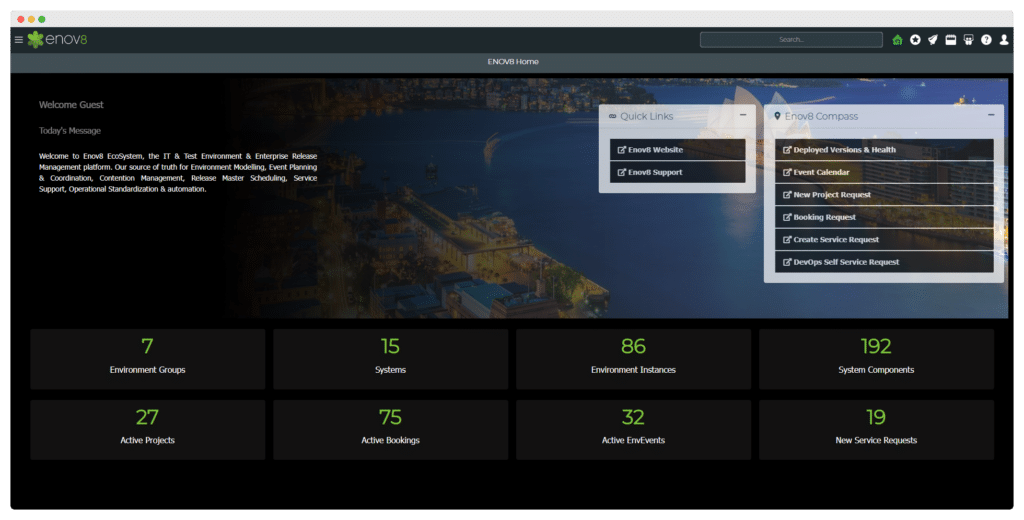
Compliance management is a crucial responsibility for Chief Information Officers (CIOs) in today’s regulatory landscape. As a CIO, ensuring that a company’s software products and services comply with applicable regulations is of utmost importance.
This process can be complex and time-consuming due to the ever-evolving nature of regulations.
Major Regulations to Know About
When it comes to compliance obligations, as a CIO, it is crucial to be familiar with the major regulations that are relevant to your industry. Here are the key regulations that may have an impact.
1. GDPR
The General Data Protection Regulation (GDPR) is a European Union law designed to protect the privacy of personal data. Understanding and implementing measures to ensure GDPR compliance is vital for safeguarding customer data and maintaining trust.
2. CCPA
The California Consumer Privacy Act (CCPA) is a law specific to California that provides consumers with greater control over their personal data. As a CIO, navigating the requirements of CCPA is essential for companies operating in California or handling data of Californian residents.
3. ISO 9000
The International Organization for Standardization (ISO) 9000 series establishes requirements for quality management systems. Adhering to these standards allows CIOs to establish robust processes and controls to ensure that software products and services meet the expected quality standards.
4. PCI DSS
The Payment Card Industry Data Security Standard (PCI DSS) comprises a set of security standards for organizations involved in processing credit card payments. As a CIO, ensuring compliance with PCI DSS is crucial to protect sensitive cardholder data and maintain secure payment processing systems.
5. CSA STAR
The Cloud Security Alliance (CSA) Security, Trust, Assurance, and Risk (STAR) registry provides a valuable public database of cloud security controls. Leveraging the guidelines offered by CSA STAR assists CIOs in selecting secure and compliant cloud service providers.
6. HIPAA
The Health Insurance Portability and Accountability Act (HIPAA) is a U.S. law that focuses on safeguarding the privacy and security of health information. CIOs in healthcare organizations must comply with HIPAA to ensure the protection of patients’ sensitive medical data.

Being aware of these key regulations and their implications is essential for CIOs, as compliance with these regulations directly impacts the security, privacy, and trustworthiness of the organization’s operations.
By staying informed and taking necessary steps to comply with these regulations, CIOs can help ensure the organization’s adherence to legal requirements and protect sensitive information.

The Importance of Compliance Management for a CIO
As a Chief Information Officer (CIO), compliance management carries significant advantages that directly impact the organization’s success and well-being. Let’s explore these advantages in more detail.
Risk Mitigation and Protection
Ensuring compliance with privacy and security regulations plays a vital role in mitigating the risks associated with data breaches, reputational damage, and legal consequences. By maintaining a proactive compliance stance, CIOs can establish robust safeguards to protect the organization and its stakeholders from potential threats.
Compliance measures such as implementing data encryption, access controls, and regular security audits help minimize vulnerabilities, thereby reducing the risk of data breaches and associated damages. Furthermore, adherence to compliance standards enhances the organization’s ability to detect and respond to security incidents promptly, strengthening its overall security posture.
Building Trust and Enhancing Reputation
Compliance serves as a tangible demonstration of the organization’s commitment to protecting customer data and upholding privacy rights. By prioritizing compliance, CIOs contribute to fostering trust among customers, partners, and stakeholders.
Compliance practices and transparent data handling procedures assure customers that their sensitive information is handled securely and with integrity. In turn, this instills confidence and strengthens the organization’s reputation as a reliable and trustworthy entity. A positive reputation built on compliance practices can lead to increased customer loyalty, stronger partnerships, and enhanced market competitiveness.
Cost Efficiency and Resource Allocation
Proactive compliance management offers substantial cost-saving benefits by preventing costly fines and penalties associated with regulatory non-compliance. By staying ahead of compliance requirements, CIOs can avoid the financial consequences that result from violations.
The allocation of resources towards compliance initiatives, including implementing necessary controls and conducting regular audits, is a strategic investment that helps safeguard the organization’s financial stability. By avoiding penalties, fines, and potential litigation, financial resources can be effectively channeled towards innovation, growth initiatives, and other strategic projects that drive the organization forward.
Moreover, compliance management encourages operational efficiency and effectiveness by streamlining processes, enhancing data governance, and promoting best practices. It enables the organization to establish standardized procedures, reduce redundancies, and optimize workflows, resulting in improved productivity and reduced operational costs.

By recognizing the importance of compliance management, CIOs can effectively prioritize and allocate resources towards compliance initiatives, thereby mitigating risks, fostering trust, and ensuring long-term success for the organization. A proactive compliance stance not only protects the organization and its stakeholders but also enables the efficient utilization of resources, allowing for innovation, growth, and the pursuit of strategic objectives.
Getting Started with Compliance Management
As a CIO, initiating effective compliance management involves a series of steps to ensure a comprehensive and proactive approach. Here’s a simplified breakdown of the key steps.
1. Understand Applicable Regulations
Thoroughly familiarize yourself with the regulations that are relevant to your industry, geographical location, and the specific operations of your organization. Stay updated on any changes or updates to these regulations to ensure ongoing compliance.
2. Assess Current Compliance Status
Evaluate your organization’s current compliance posture by conducting a thorough assessment. Identify any gaps or areas of improvement in your existing compliance processes and controls. Engage stakeholders, such as legal and security teams, to ensure a comprehensive evaluation.
3. Develop a Compliance Strategy
Create a well-defined compliance strategy that aligns with your organization’s goals and objectives. This strategy should outline specific plans and initiatives to achieve and maintain compliance with the relevant regulations.
Consider factors such as resource allocation, training programs, and technology investments to support your compliance efforts.
4. Implement Compliance Measures
Collaborate with cross-functional teams to effectively implement your compliance strategy. Establish robust processes, controls, and technologies to ensure adherence to regulatory requirements.
Leverage compliance management solutions, such as the Enov8 Platform, to guide and track compliance across your systems and data. These solutions provide invaluable tools for modeling and capturing key insights, including compliance-related information, to facilitate effective compliance management.
5. Continuously Monitor and Improve
Regularly monitor and review the effectiveness of your compliance program. Implement ongoing monitoring processes and periodic assessments to identify and address any compliance gaps. Stay proactive in addressing evolving regulatory changes and emerging compliance risks by staying informed and adapting your compliance measures accordingly. Continuously seek opportunities for improvement and innovation in your compliance practices to ensure ongoing effectiveness.

By following these steps and leveraging appropriate compliance management solutions, you can establish a strong foundation for effective compliance management as a CIO. This approach allows you to navigate the complexities of regulatory requirements while ensuring the protection of sensitive data, building trust, and mitigating risks for your organization.
Choosing a Compliance Management Solution
When selecting a compliance management solution, it is essential to consider various factors that contribute to its effectiveness and suitability for your organization’s needs.
Here are some additional considerations to keep in mind.
1. Comprehensive Coverage
A comprehensive compliance management solution should go beyond mere checklist-based compliance. It should provide the capability to model and capture key insights across your environments, release operations, and data itself. Solutions like Enov8, for example, offer a holistic approach to compliance by allowing you to map and visualize your entire IT landscape, including applications, infrastructure, and dependencies.
This comprehensive view enables better understanding of the impact of compliance requirements on your systems and facilitates proactive compliance management.
2. Ease of Use
Look for a compliance management solution that is user-friendly and accessible to both technical and non-technical stakeholders within your organization. Intuitive interfaces, clear workflows, and simplified processes make it easier for teams to collaborate, ensuring efficient adoption and participation in compliance efforts.
Solutions like Enov8 provide user-friendly interfaces and customizable workflows that streamline compliance activities, making it easier for stakeholders at all levels to engage effectively.
3. Scalability and Integration
As a CIO, it is crucial to choose a compliance management solution that can scale and adapt as your organization grows and evolves. Consider solutions that offer flexibility and support integration with your existing systems and processes.
This allows for seamless incorporation of compliance management into your organization’s overall IT operations. Enov8, for instance, provides scalable and configurable features that can accommodate the unique needs of your organization as it expands and changes over time.
4. Robust Reporting and Analytics
Effective compliance management requires comprehensive reporting and analytics capabilities. A suitable compliance management solution should provide real-time insights into your compliance status, highlighting areas of strength and areas that require improvement.
Look for solutions that offer customizable dashboards, automated reporting, and analytics tools to track and communicate compliance progress effectively. With Enov8, you can generate customizable compliance reports, monitor compliance metrics, and gain valuable insights into your compliance posture, enabling informed decision-making and continuous improvement.

By considering these factors and leveraging solutions like Enov8, you can enhance your compliance management efforts. These solutions provide the necessary tools and capabilities to model and capture key insights across your environments, release operations, and data, ensuring comprehensive compliance coverage.
They also offer user-friendly interfaces, scalability, integration options, and robust reporting and analytics capabilities to streamline compliance activities and facilitate effective compliance management. Choosing the right compliance management solution empowers you as a CIO to navigate the regulatory landscape with confidence and ensure your organization’s compliance success.
Compliance Management is Critical
In conclusion, as a Chief Information Officer (CIO), compliance management holds significant importance in your multifaceted role. By prioritizing compliance and diligently following the steps outlined in this article, you can ensure that your organization meets the necessary regulatory requirements while effectively mitigating associated risks.
It is crucial to foster a deep understanding of the ever-evolving regulatory landscape, identifying the regulations that are relevant to your industry and geographic location.
Moreover, leveraging appropriate compliance management solutions plays a pivotal role in achieving effective compliance management. Solutions like the Enov8 Platform offer invaluable capabilities for modeling and capturing key insights across your environments, release operations, and data. With Enov8, you can gain a comprehensive understanding of your entire IT landscape, including applications, infrastructure, and dependencies.
This holistic view empowers you to proactively identify and address compliance requirements, thereby fostering a culture of compliance within your organization.

Furthermore, selecting a compliance management solution that is user-friendly and caters to both technical and non-technical stakeholders is crucial. The ease of use facilitates seamless collaboration and adoption across teams, ensuring efficient and effective compliance management efforts. Scalability and integration capabilities are equally vital considerations, allowing the chosen solution to adapt and grow alongside your organization’s evolving needs.
Additionally, robust reporting and analytics capabilities provided by compliance management solutions enable real-time insights into your organization’s compliance status. Customizable dashboards, automated reporting, and advanced analytics tools facilitate comprehensive tracking and communication of compliance progress. Solutions like Enov8 empower you to generate customizable compliance reports, monitor key compliance metrics, and derive valuable insights to drive informed decision-making and continuous improvement.
As a CIO, embracing compliance management as an opportunity enables you to safeguard valuable data, foster trust among stakeholders, and drive the overall success of your organization in a regulatory environment. By prioritizing compliance, leveraging suitable compliance management solutions such as the Enov8 Platform, and consistently staying informed about regulatory changes, you can navigate the regulatory landscape with confidence, ensuring the long-term compliance and success of your organization.

Author
Jane Temov is an IT Environments Evangelist at Enov8, specializing in IT and Test Environment Management, Test Data Management, Data Security, Disaster Recovery, Release Management, Service Resilience, Configuration Management, DevOps, and Infrastructure/Cloud Migration. Jane is passionate about helping organizations optimize their IT environments for maximum efficiency.
